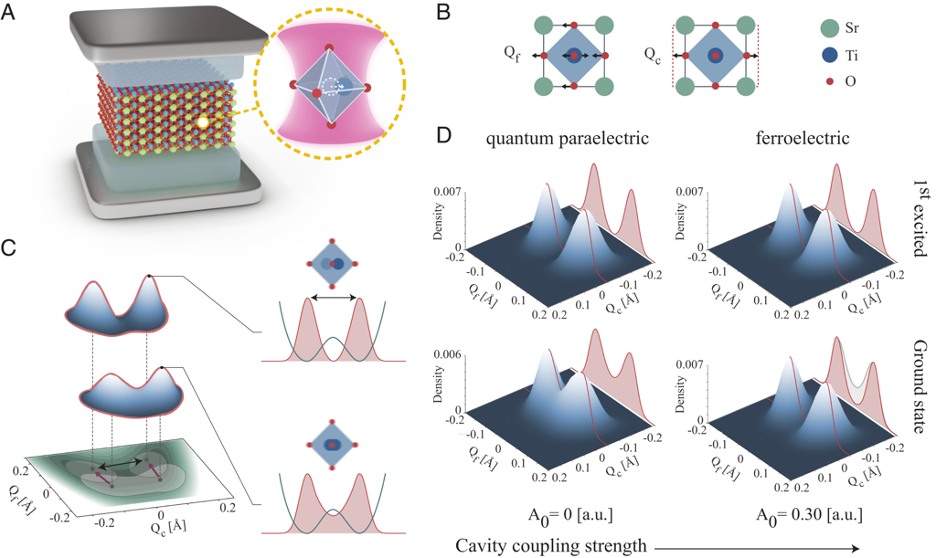A promising route to achieve strong light-matter interaction is to embed materials in optical cavities, as opposed to employing sophisticated laser sources to drive the materials out-of-equilibrium. The confinement of light in a narrow region of space, provided by the cavity, boosts the interaction between the photons and the microscopic constituents of the material. The boosted interaction can alter the collective behaviour of the material’s constituents unlocking, for example, magnetic, superconductive and ferroelectric phases [1] of a light-matter hybrid nature. The origin of the modified material properties can be understood in terms of a dressing picture, where the electronic (or nuclear) degrees of freedom of the material are dressed by the electromagnetic field and its fluctuations resulting in a light-matter state of hybrid character called polaritons [2, 3]. Along these lines, light can be identified as a tool to tailor materials properties to specific technological applications, ranging from sensing, information technology, or light-harvesting, among others. In order to investigate these unexplored phenomena, in our group we develop ab-initio methodologies grounded in the low energy description of quantum electrodynamics (QED). Specifically we develop first-principle based model Hamiltonian, many-body perturbation theory methods and density functional theories extended to QED.
Emergence of a photo-groundstate. Extracted from [1].
References:
[1] The ferroelectric photo ground state of SrTiO3: Cavity materials engineering.
S. Latini, D. Shin, S. Sato, C. Schäfer, U. de Giovannini, H. Hübener, and A. Rubio.
Proceedings of the National Academy of Sciences of the United States of America 118, e2105618118 (2021).
DOI: 10.1073/pnas.2105618118
[2] Phonoritons as Hybridized Exciton-Photon-Phonon Excitations in a Monolayer h-BN Optical Cavity.
S. Latini, U. de Giovannini, E. J. Sie, N. Gedik, H. Hübener, and A. Rubio.
Physical Review Letters 126, 227401 (2021).
DOI: 10.1103/PhysRevLett.126.227401
[3] Cavity Control of Excitons in Two-Dimensional Materials.
S. Latini, E. Ronca, U. de Giovannini, H. Hübener, and A. Rubio.
Nano Letters 19, 3473-3479 (2019).
DOI: 10.1021/acs.nanolett.9b00183
